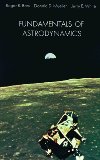Wikipedia dicit:
Starship is a fully-reusable and super heavy-lift launch vehicle in development by SpaceX. Both of its stages – Super Heavy booster and Starship spacecraft – use liquid oxygen and liquid methane as propellant. Starship’s main features are its very high payload mass capability and low potential operating cost. A tanker variant spacecraft is planned that will refuel other Starships in orbit, increasing the 100 t (220,000 lb) transport range to higher energy orbits and destinations, including the Moon and Mars. The earliest Starship variant will deploy satellites, while later variants will also serve space tourists, or be optimised for lunar landings. Starship’s potentially low cost is key in enabling SpaceX’s Mars ambitions as well as making point-to-point rocket travel on Earth possible.
Starship will launch at Starbase, Kennedy Space Center, and two offshore launch platforms. It would launch upright, with the booster’s thirty-three Raptor engines operating in parallel. After Super Heavy separates, the spacecraft fires its three Raptor Vacuum and three sea-level engines, inserting itself into orbit. The booster then controls its descent via its four grid fins, targeting the launch tower’s arms. At the end of the mission, the Starship spacecraft de-orbits and enters the atmosphere, protected by a series of hexagonal heat shield tiles. The spacecraft then glides towards the landing site using its flaps for control and flips to land.
The rocket was first outlined by SpaceX as early as 2005, with frequent design and name changes as the concept matured. In July 2019, Starhopper, a prototype vehicle with extended fins acting as fixed landing legs, performed a 150 m (490 ft) low altitude test flight under the power of a single Raptor engine. In May 2021, Starship SN15 successfully flew to 10 km (6 mi), transitioning to horizontal free-fall before successfully landing for the first time after four failed attempts by previous prototypes. As of February 2022, the BN4 booster and SN20 spacecraft are scheduled for the first full-stack flight in early 2022, though this schedule is subject to change.
Video credit: SpaceX









 Subscribe to blog posts using RSS
Subscribe to blog posts using RSS










